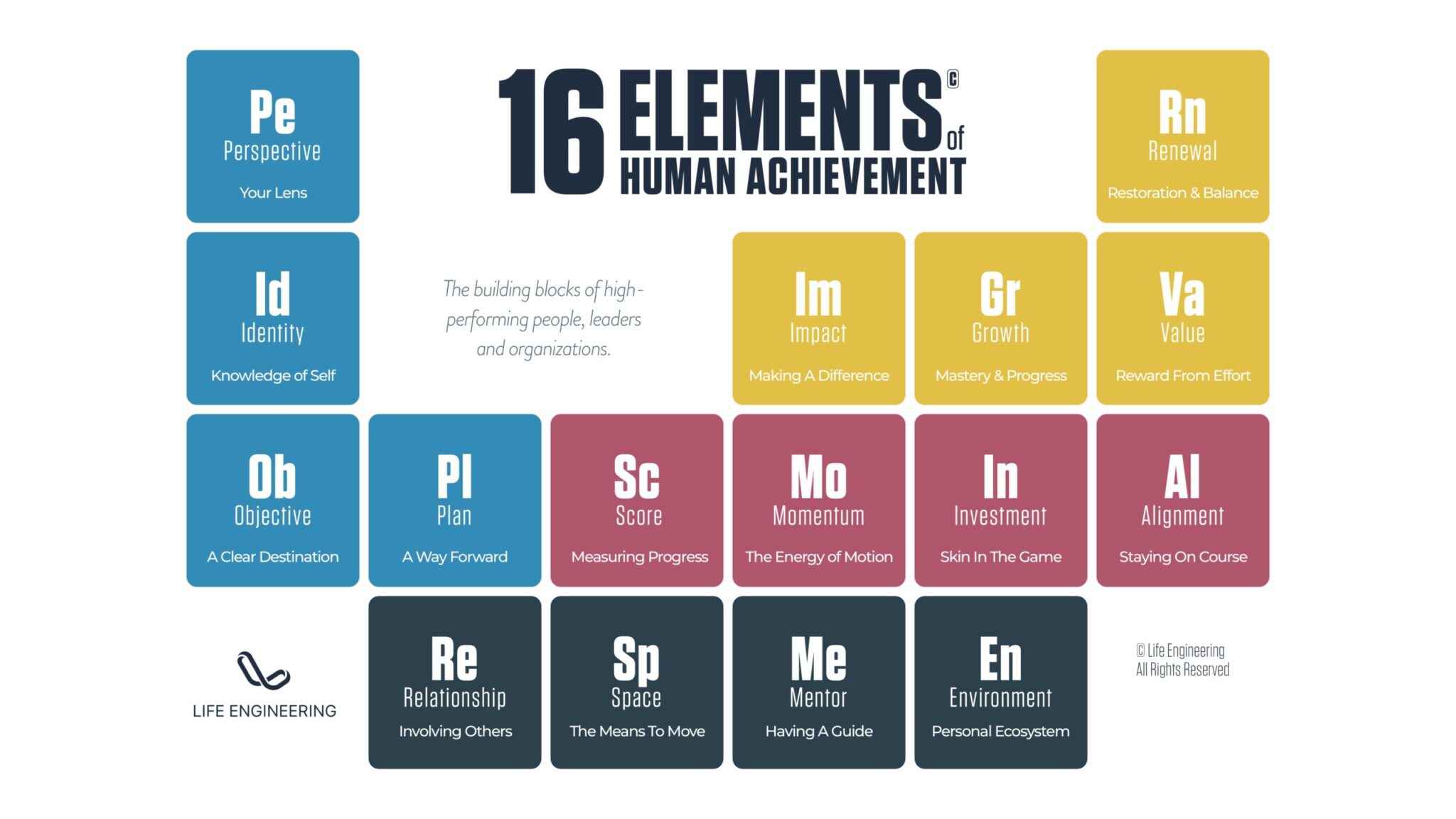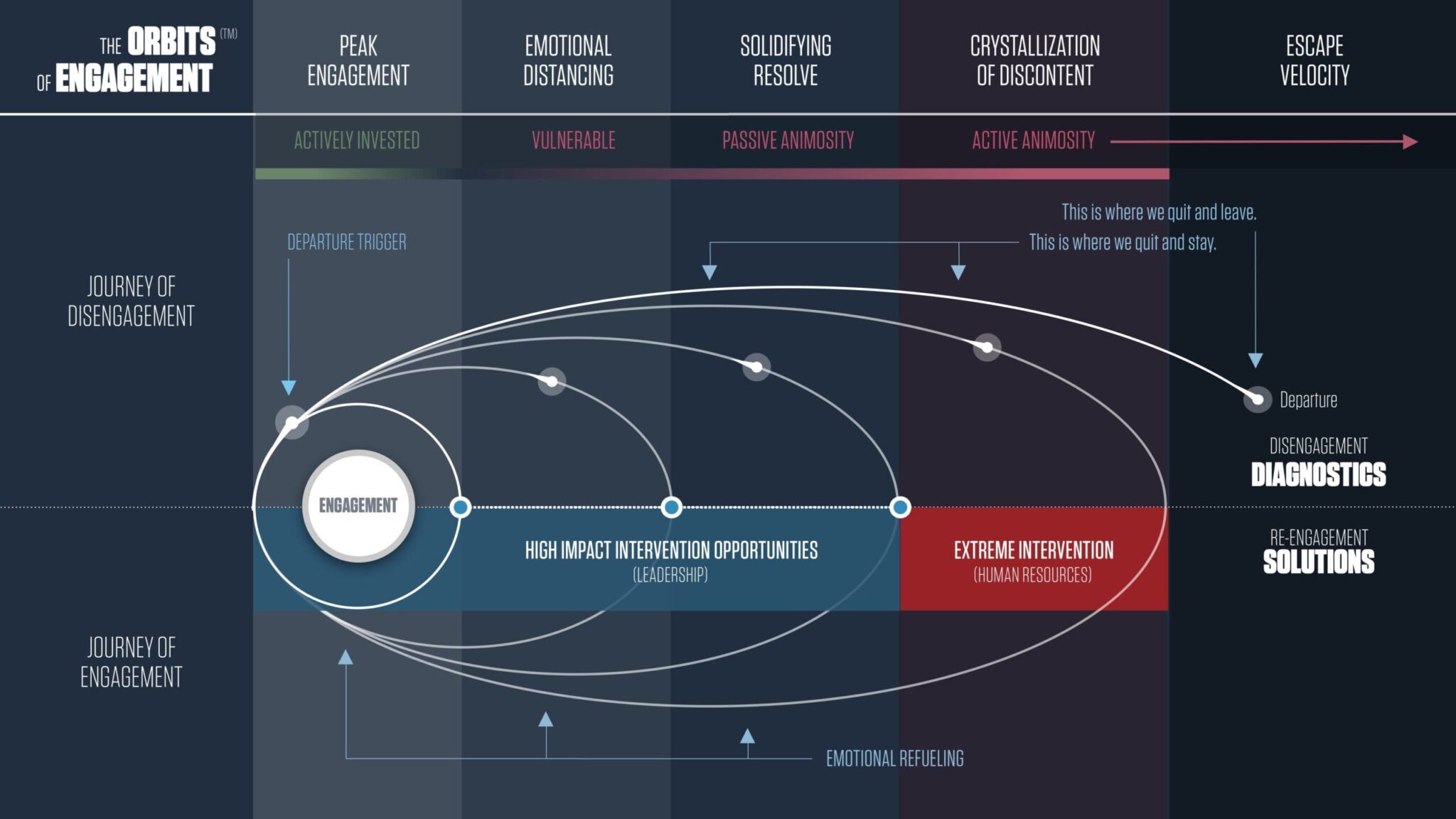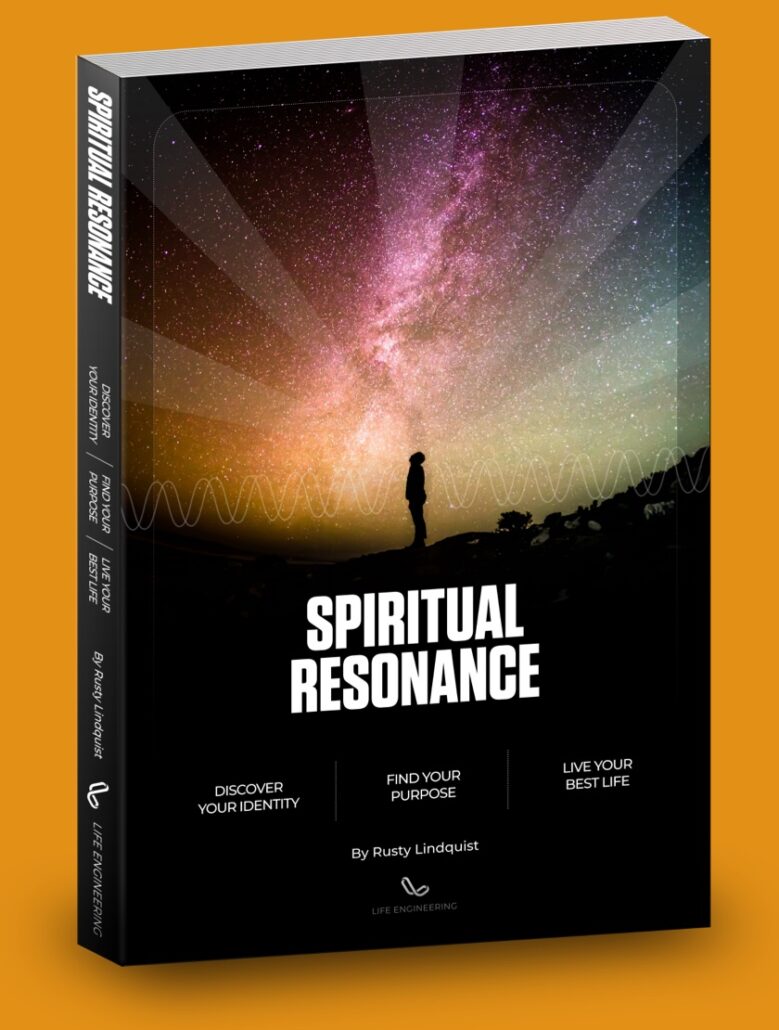a quick synopsis
The word “engagement” describes the energy we have for the things we do. Over time, that energy will ebb and flow. Sometimes we are highly engaged, and other times we become disengaged.
Disengagement can happen at the micro level, like becoming disengaged from a tedious task or within the span of a day. It can also happen at a larger level, like becoming disengaged from a goal or objective. It can even happen on a macro level, like becoming disengaged from work, in a relationship, or with life itself.
Small, short-term disengagement can be healthy… allowing you to create just a little separation, restoring perspective and leaving space for renewal… because none of us can stay highly engaged all the time.
But prolonged disengagement can be catastrophic to the outcomes and objectives of our lives that really matter.
Our ability to sustain energy in the things that matter is critical to long-term success. We call it grit, perseverance, tenacity and “stick-to-it-iveness”!
Because it’s so important, we should invest in the ability to measure and manage the energy we have for the aspects of our lives we really care about!
Scroll down to learn more about why energy matters so much when it comes to performance, and why you should measure your own engagement regularly. When you’re ready, use the link below to track your own engagement.
the science
of engagement
We spent the last 20 years studying the science of engagement… the energy people have for the work they do. We hired a team of scientists and looked across industries, fields, and disciplines.
We looked most closely at the science of gamification, fascinated by the gaming industry’s consistent ability to create addiction.
We then synthesized that research into 16 fundamental elements that are proven to consistently drive engagement.
We’ve presented them at keynotes at large conferences, in seminars, and in executive leadership development training sessions and to leaders at Fortune 500 organizations.


We then identified the stages of disengagement people go through… the emotions they feel, and the behavioral signals they send as they disengage at work and in life.
With this understanding, produced by a dedicated team of behavioral scientists over several years, we began to innovate.
We’ve built an entire system to help you measure and manage engagement within your lives, within your teams and within your organizations.


Responses